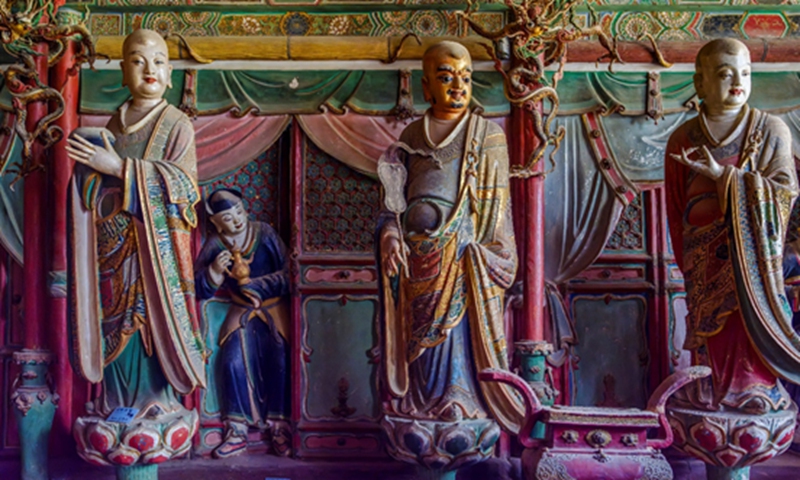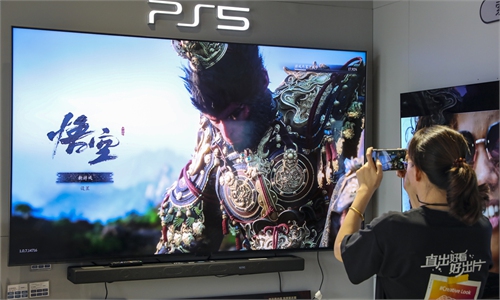Phenomenal popularity of Black Myth: Wukong sparks tourism surge in filming location Shanxi

Sculptures at the Xiaoxitian Temple in North China's Shanxi Province Photo: VCG
Since China's first AAA game, Black Myth: Wukong, was officially released at 10 am on August 20, its numerous filming locations have captivated the attention of the game's legions of fans. Bookings for one of the filming locations even rose by 236 percent on online travel platforms compared with the same period of last year.
This long-awaited game, which was inspired by the story of the legendary Monkey King, topped PC gaming platform Steam's chart by a large margin after its launch and triggered widespread discussions on its cultural implications.
According to the Weibo account of the Shanxi Provincial Department of Culture and Tourism, the game features 36 filming locations across various provinces and cities in China, with 27 situated in North China's Shanxi.
Search enquires for Shanxi on Trip.com Group, one of China's largest online travel platforms, surged by over 10 percent on Tuesday compared to the previous day.
Searches for filming locations like Datong and Shuozhou increased by 20 percent; while ticket orders for the Xiaoxitian scenic spot (one of the filming locations) rose by 236 percent compared to the same period of last year, the Global Times learned from the company.
Data from other platforms such as Fliggy also indicate that interest in Shanxi tourism doubled compared with the previous month.
Shanxi boasts more ancient buildings than any other provinces in China, accounting for over 70 percent of the nation's total. These structures range in age from the Tang Dynasty (618-907) to the Republic of China (1912-49).
Hashtag "tourists urge Shanxi to prepare for pouring wealth" has garnered 110 million reads on China's X-like platform Sina Weibo.
Moreover, a video released by the Shanxi Provincial Department of Culture and Tourism's official WeChat account, which juxtaposes game footage with real-life local attractions, garnered over 100,000 likes and 95,000 reposts at the time of press.
Netizens flooded the account with advice on handling the influx of tourists. Suggestions include themed "passports" and Journey to the West merchandise, as well as multilingual guides to assist foreign visitors on their "pilgrimage to the holy land."
The Shanxi Provincial Department of Culture and Tourism actively engaged with these comments, with one comment gaining particular resonance, "5,000 years may seem distant, but Shanxi is close."


